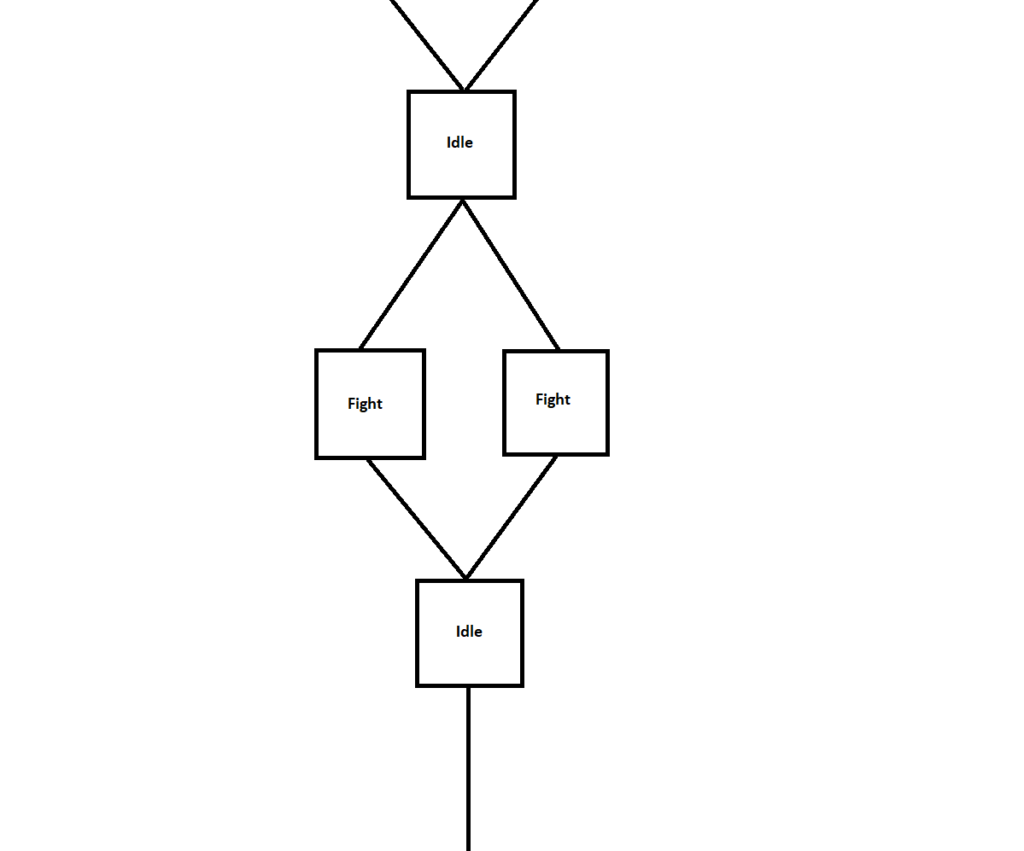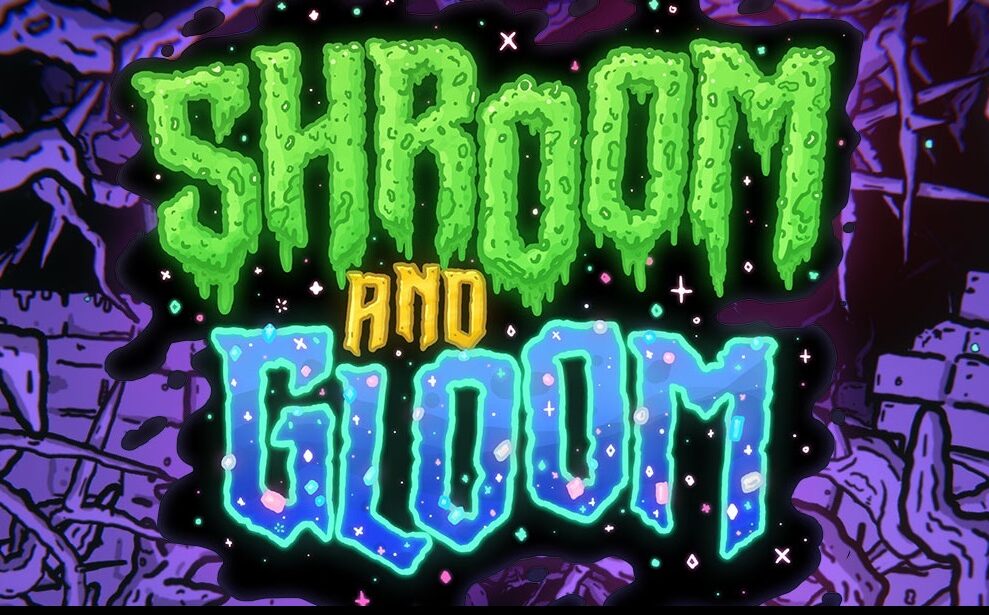Shroom & Gloom Analysis – Movement (3)
The game comprises of three different action types: Movement, Deck building, and Fighting. The movement in this game is deceptively simple:
Press ‘W’ for success
Deceptive, you say? Well, yeah.
As mentioned, the player presses ‘W’ to move through the various rooms. This is one-directional in that the player can only move forward.
Effectively you’ll wander through a cycle of two different types of rooms (Fight and Camp) with varying combinations:

The camp room is an ‘idle’ room where the player can take their time and perform various tasks that help to build their deck. It consists of a combination of two different elements. The ‘forward’ section of the room (the part the player reaches first) will either contain:
- A card trader (A molerat king): The player can trade in cards they don’t need for the ones that the trader has. Generally, the trader cards will be either worth 1,2, or 3 traded cards.
- Top Tier Chest: An unlocked and openable chest that contains a powerful card. These power cards are generally either one-time uses (revive on death…etc) or constant passives (increase health when the player unlocks new cards). You won’t find these cards anywhere else in the game and they are unique.
- Health/Mana/AP Refresh: Glowing pools that restore the player’s health or mana or action points to their maximum.
This forward section is combined with a ‘back’ section of the room which can contain:
- Rest Room: Nothing to interact with.
- Totems: Blank platforms on which the player can spawn various totems on (using cards). Examples are card enhancers, card removers, and food makers.
- Chest: Locked chests that contain cards.
Once the player is done with the idle room, they can then open a door to proceed to the ‘fight’ room:
- Normal Fight: these fights contain incrementally challenging, but not pinnacle fights.
- Boss Fight: these are the pinnale fights that link into the story. They are very tough and test the player’s deck build.
Widening our scope, we can also see a branching map design. It’s persistent with the machine that the game is installed on. I haven’t determined if this is consistent over all installs. The map itself starts covered in ‘fog of war’ and it’s up to the player to explore all available routes.

I’ll dive deeper into the specifics of each room type, in the ‘Deck Building’ and ‘Combat’ sections, however, we can have a nice and simple movement cycle that feeds into the other core elements.

